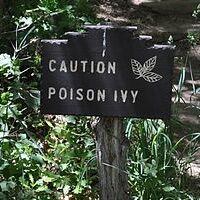Scent
Poison Ivy, Pheromones, and the (Super) Power of Plants
What is and what is not a pheromone?
Posted November 15, 2021 Reviewed by Ekua Hagan
Key points
- A pheromone is a social scent, a chemical that triggers a natural behavioral response by members of the same species.
- To the extent that "Batman" super-villain Poison Ivy’s influence is plant-based, her power over people is not pheromonal.
- "Batman" villain Poison Ivy could conceivably use plants to create toxins that exert powerful control over humans.

The comic book character Dr. Pamela Isley, a.k.a. Poison Ivy, usually a super-villain enemy of Batman's and more recently a friend with benefits to Harley Quinn, prefers plants over people. Originally depicted more consistently as a scientist, she eventually turns green and gains the power to control plants in the 1990s. In either version, she pursues her eco-terrorist purposes by developing plant-based chemicals that let her influence other people's choices—essentially mind control. The stories keep referring to her power over other people as pheromonal, but is it really?
A pheromone is a social scent, a chemical that triggers a natural behavioral response by members of the same species. Our bodies detect pheromones through our sense of smell, affecting us through our olfactory system even if we don’t consciously realize it at the time.
Sex pheromones attract mates, typically the female of the species emitting pheromones that indicate her sexual receptivity, as opposed to releaser pheromones, which can attract mates from miles away without eliciting a direct sexual response.
While Ivy has greater power over men, she can influence women as well, such as when she makes Catwoman deliver a case of money to her (Batman #608, 2002). Organisms can release some types of pheromones that will affect members of the same sex, including aggregator or aggregation pheromones, which will bring members of the same species together regardless of gender (Landolt, 1997). If she gave more thought to the range of people’s feelings, Ivy might try using alarm pheromones to trigger fight-flight-freeze responses, thereby making people turn violent or fearful (Post et al., 1984; Šobotník et al., 2008). A trail pheromone might lead someone into a trap (Wilson, 1962), or a territorial pheromone might make people feel inclined to stay away from her headquarters.
Not all of these types of pheromones are known to exist in the human species. To the extent that Ivy’s influence is plant-based, though, the power is not pheromonal in the first place because humans and plants are different species. Botanical biochemist that she is, Ivy evidently realizes that (at least when a more knowledgeable author is writing the story). When she attempts unsuccessfully to make Catwoman disclose Batman’s identity, Ivy calls the particular chemical she releases a toxin, not a pheromone (Gotham City Sirens #2, 2009).
Could she conceivably use plants, then, to create toxins that exert these kinds of effects? Yes, if they are designed to activate potential responses that already exist within a human being. We are not insects. We do not have an insect's response patterns. Nevertheless, something that can activate the associated areas of the brain might trigger the responses that we do have.
Psychoactive substances, psychologically active, alter perception, mood, and potentially behavior, generally by boosting, blocking, or mimicking the body's natural hormones and neurotransmitters, the chemicals that regulate nerve cells' activity and relay signals throughout the nervous system. Just as nerve gases produce their effects by speeding the release of the body's most prevalent neurotransmitter, acetylcholine, other chemicals–including some released by plants—can influence the human nervous system. So the effects she produces are conceivable, but honestly, they are simply science fiction. For now.
Note: Langley (2012) covered these pheromone distinctions in a feature about the Poison Ivy character, but the second edition, Langley (2022), does not. The latter devotes that page space to her social introversion instead.
Related Posts
References
Landolt, J.P. (1997). Sex attractant and aggregation pheromones of male phytophagous insects. American Entomologist. 43(1): 12–22. doi:10.1093/ae/43.1.12.
Langley, T. (2012). Batman and psychology: A dark and stormy knight. Wiley.
Langley, T. (2022). Batman and psychology: A dark and stormy knight (2nd ed.). Turner.
Post, D. C., Downing, H. A., & Jeanne, R. L. (1984). Alarm response to venom by social wasps Polistes exclamans and P. fuscatus. Journal of Chemical Ecology. 10(10): 1425–1433. doi:10.1007/BF00990313.
Šobotník, J., Hanus, R., Kalinová, B., Piskorski, R., Cvačka, J., Bourguignon, T., & Roisin, Y. (2008). (E,E)-α-farnesene, an alarm pheromone of the termite prorhinotermes canalifrons. Journal of Chemical Ecology. 34(4): 478-486, doi:10.1007/s10886-008-9450-2.
Wilson, E. O. (1962). Chemical communication among workers of the fire ant Solenopsis saevissima (Fr. Smith). 3. The experimental induction of social responses. Animal Behavior, `10, 159-164.


